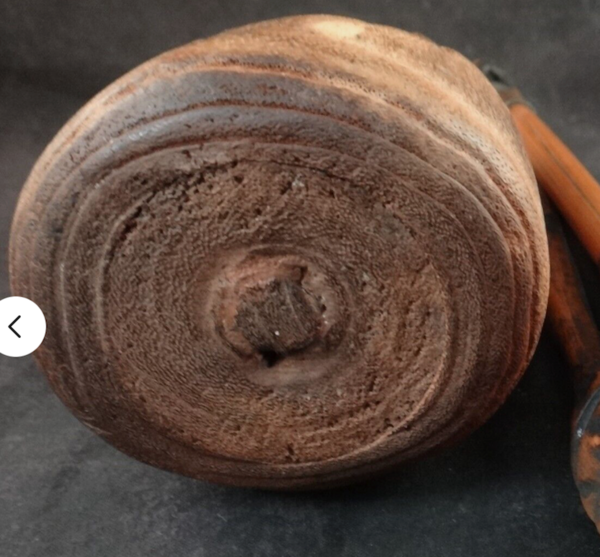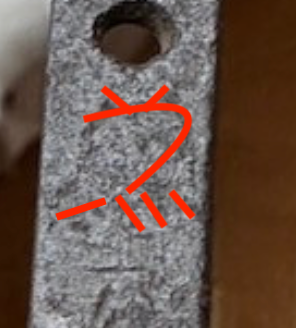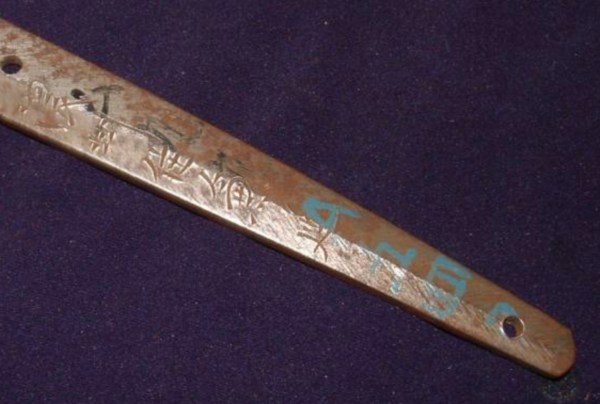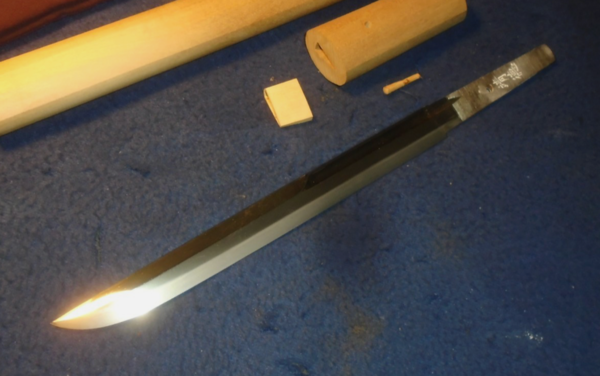
John C
Members-
Posts
2,443 -
Joined
-
Last visited
-
Days Won
15
Content Type
Profiles
Forums
Events
Store
Downloads
Gallery
Everything posted by John C
-
Just a guess but it looks a bit like number 9 then hiragana KE or possibly Hiragana TA KE. John C.
-
Auction title: Sword Auction description: Sword Pictures: 3 - all the same shot. https://www.ebay.com/itm/357714728503? John C.
-
- 4
-

-
Thank you, Rohan. That makes a lot more sense in the context of what Kanehide was trying to accomplish. John C.
-
Hello: Saw this mei on a decorated iron piece. Too short to be a bokuto "doctor's sword" but too long to be a netsuke. Not symetrical enough to be a tansu handle. Anyway, I was curious about the name of the metal smith, which may give a clue as to what it is. John C.
-
May I follow-up with a guess? Is the passage above referring to ara-nie, large "boiling water" crystal structure? John C.
-
A scholarly article that some may find interesting. https://newvoices.org.au/volume-2/understanding-samurai-disloyalty/ John C. @Scogg Sam: should this be in some other category?
-
Hello: While doing research on Kanehide, his biography mentioned the phrase in the pic. Google AI translated it as “exploring the application of hamon and developing techniques to create a hamon that exudes moisture.” I am assuming they are referring to the "bubble-like" structure of the Martensite crystals, though I'm not sure. Is that how it reads in Japanese? Thank you, John C.
-
Book co-authored by Nakata Kanehide on making kogatana
John C replied to John C's topic in Wanted to Buy
Thanks, Chandler. I might give them a try. John C. -
From what I could see in the pic, the grain structure (grain width and porous nature). The use of bamboo was also quite common. The one I have (see pic) has a very similar concentric and porous grain, though not as refined as yours. John C.
-
Aaron: This site here has some good info on tabako-ire, kiseru, and other smoking related items. The whole set-up could be referred to as sagemono (items that hang from the obi or belt since kimono had no pockets). Also, the netsuke ash tray looks like bamboo to me. The shredded tobacco looks typical as well. https://pipedia.org/wiki/Ire John C.
-
Looks like the thicker (11mm) pierced tsuba as well. John C.
-
Book co-authored by Nakata Kanehide on making kogatana
John C replied to John C's topic in Wanted to Buy
25% tariffs plus shipping plus getting hung up at the border makes me avoid ordering from Japan right now. Being a Japanese language book, however, I might not have a choice. John C. -
It sells for about 50 bucks in Japan, if you can find it. Please let me know if you have a copy you would be willing to sell. John C.
-
Juyo swords found in Shin Gunto Koshirae
John C replied to PNSSHOGUN's topic in General Nihonto Related Discussion
Wow. at 8,500 the reserve was met! Do you know where it ended? John C. -
I was thinking along the same lines, Mark. Maybe Kanemitsu or Kanemoto, or Kanemaru. This is what I think I'm seeing. John C.
-
The Yamashiro style jiri seems a bit different as well. The OP is straighter across rather than that slight upturn typical of Yasunori. John C.
-
John C.
-
Theories on the mix of Western and Japanese numbers on gunto
John C replied to John C's topic in Military Swords of Japan
The other kanehide pics I have show only numbers, however I have a Kanenobu (see pic) with the same A number system as the Kanehide but what looks like MU as the katakana. John C. -
Disregard the seller and look at the blade. This could be a good one for a collection. https://www.ebay.com/itm/357721093608? John C.
-
Theories on the mix of Western and Japanese numbers on gunto
John C replied to John C's topic in Military Swords of Japan
Thank you for the link, Thomas. John C. -
Theories on the mix of Western and Japanese numbers on gunto
John C replied to John C's topic in Military Swords of Japan
@Bruce Pennington I thought this was interesting, though it probably doesn't mean a whole lot. The pic is of 3 Kanehide gendaito. Notice that each one has two sets of numbers using the same letter - A; the first set seems to use the katakana letter and the second set uses the western letter A. Do you think there is some connection with the Letter A in bluish-green paint to identify Kanehide's work or to identify a particular arsenal? Or, could this just be happenstance with these blades being forged around the same time so they got the same series letter. John C. -
NTHK confidence in evaluating mei
John C replied to John C's topic in General Nihonto Related Discussion
Thank you, Dee. I have those as well. Note how the Kane character is different than that of the OP. Mal graciously provided me with a pic that matches the OP blade. Now I just have to figure out if it is post or pre war. John C. p.s. If anyone is interested, I have a DOCX file of the Kanehide mei I have collected so far tracking his changes. It is a work in progress and missing a lot of data. I currently have 26 of his mei on file. If anyone has a Kanehide blade that is not listed online anywhere, PLEASE feel free to let me know. I would love additional input. p.s.s. Just to clarify what some may be thinking. There is no issue with the sale itself. Eric and I have spoken about this blade already. My personal issue is with the NTHK attribution to this particular smith and not some other gendai smith named Kanehide.







1980.thumb.png.9ca5f6a492b1f69df6d89259ed02cce5.png)



